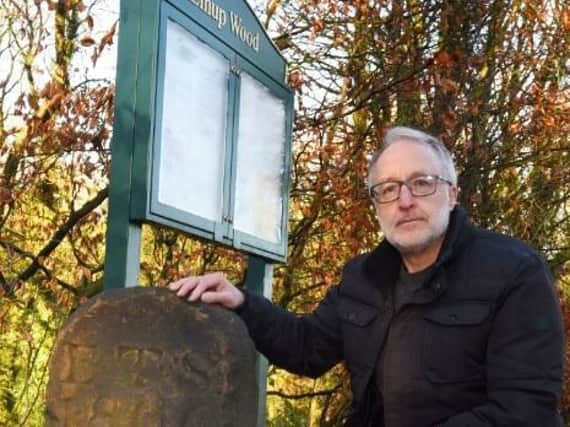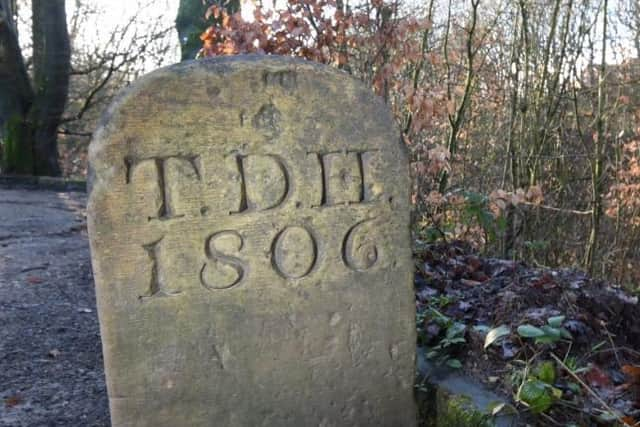Wigan historian hoping to get boundary stone listed


Jim Meehan, from Standish, is making an application to Historic England for the boundary stone, which dates back to 1806, to be protected.
It marks the boundary between land once owned by Edward Towneley Standish and Sir Thomas Dalrymple Hesketh.
Advertisement
Hide AdAdvertisement
Hide AdFrom 1778 to 1807, Edward Towneley was the Lord of Standish Manor, while Sir Thomas was the third Baronet Hesketh of Rufford from 1796 to 1842 and owned land in Shevington.


The stone indicated the interface between their estates and, in effect, divided Standish with Langtree and Shevington. The stone was found in Mill Brook before being moved to its current location at Elnup Wood near Mill Dam Cottages, according to the website Wigan and Leigh buildings.
Jim, who is a member of Wigan Archaeology Society and also Wigan Local History and Heritage Society, said: “I was researching this and normally a stone like this would qualify to be listed because of its age and historical significance.
“Historic England have a pre-1850 policy and this stone dates back to 1806 so you’d think it stands a good chance.
Advertisement
Hide AdAdvertisement
Hide Ad“It’s classed as street furnitures which covers things such as sign posts and telephone boxes.
However, Jim said that because the stone has been removed from the brook and put in its current location, it can’t be considered under serious threat which is another criterion for Historic England.
He said the large marker lay in Mill Brook, which runs in a deep valley through Elnup Wood, which is between Standish and Shevington, and it was lifted from the stream in around 2009 and placed on the bank nearby.
The slab was recovered with the help of the owner of a nearby cottage, who understood its historical importance, along with Groundwork, which cares for the land that includes the woods. There were a number of theories about the stone’s origins, with many believing it was the gravestone of a much-loved pit pony that worked at a mine in the area.
Advertisement
Hide AdAdvertisement
Hide AdAnother view was that it marked an old mine or the edge of the mining rights of TDH, the person whose identity is unknown.
The stone has now been moved and placed adjacent to Mill Wood Cottages on ParkbrookLane.
It has been set upright which will have been its original orientation and both faces of the stone can now be seen with the second face carrying the inscription “ETS 1806”.
Jim says there remain unanswered questions about the artefact.
Advertisement
Hide AdAdvertisement
Hide AdHe said: “We still don’t know how the stone ended up in the brook and what was its original location.
“The brook was the boundary between the estates and remains the ward boundary between Standish and Shevington. So I want to know whether the stone originally stood on the lane where it crosses the brook.
“There was also mining activity in the area.
“Standish Hall drift mine was nearby – and the stone may have uprooted and discarded when the drift mine was dug."
He added: “We’ll have to see how the bid to get it Grade II listed goes but at least we know it’s protected now that it’s been moved from the brook.”